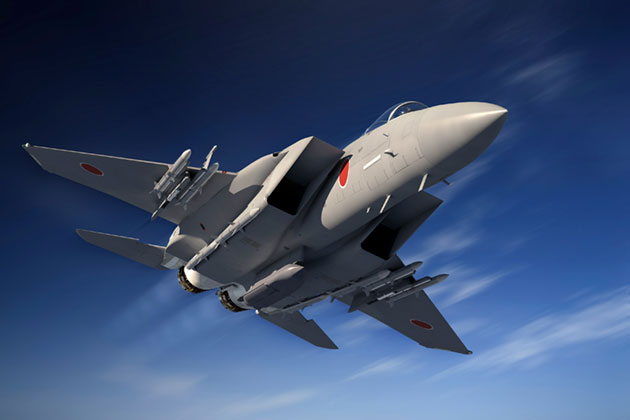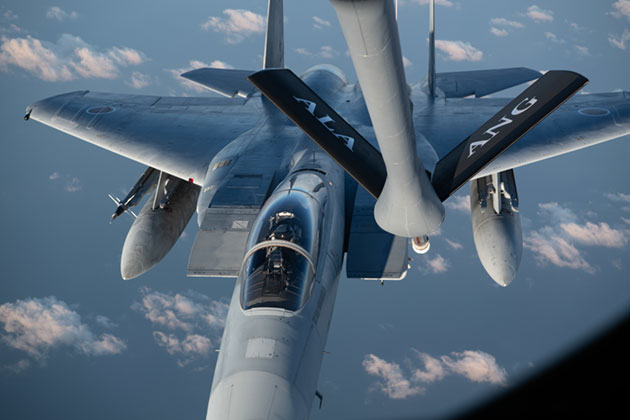Japan Upgrades F-15 Fleet

2021 has been the year of rebirth of the iconic Eagle. The United States Air Force (USAF) took deliveries of the game changing F-15EX and the advanced F-15QA Ababil for the Qatar Emiri Air Force landed in country. Just as the year was wrapping up, the USAF and Boeing finalized a Foreign Military Sale (FMS) contract to convert Japan’s existing F-15J fighters to F-15 Japan Super Interceptor (F-15JSI). Taking advantage of remaining aircraft life, this upgrade brings highly advanced sensors and avionics suite integrated in partnership with Mitsubishi Heavy Industries on behalf of Koku Jietai, delivering contemporary capabilities to Japan at par with those in the current production F-15.
F-15JSI is not just another upgrade program, it’s a total transformation of the jet.
Boeing and the industry team including BAE, Raytheon and Honeywell are working closely with the USAF and Mitsubishi to deliver relevant capabilities for a rapidly evolving security environment.
Transformational, Complementary Capabilities
Today’s F-15 includes advanced technologies such as advanced cockpit touch displays, new sensors and radar, one of the most advanced electronic warfare systems and a large weapons payload – notably including the ability to carry outsize weapons for stand-off roles in the high-end fight. It is because of these contemporary capabilities that Air Forces have chosen the F-15 to bring affordable mass to their force structures for decades into the future.
Regional Security and Interoperability
Emerging threats in the Indo-Pacific include hypersonic, re-targetable, long range missiles and next gen Early Warning and Control aircraft using alternative sensors to detect low observable fighters at longer range. Faster missiles with longer range, faster processors for radars, better data-link capability, and more weapons in the fight are some of the keys to outpace these threats. That’s where F-15 becomes highly relevant.
F-15 has the longest range, carries more weapons and flies faster than any other fighter in the world making it fully capable of deterring and, if necessary, defeating emerging threats in the Indo-Pacific. As the United States and partner nations update force structures, the complementary and interoperable capabilities of the F-15 strengthen their ability to secure peace throughout the region.

Evolving at the Speed of Relevance
The key to F-15s longevity has been its continuous evolution. The jet has sufficient space, computing infrastructure, structural strength and power to continue evolving in the future. As a key partner since 1978, Japan’s confidence in F-15 comes from the demonstrated performance with speed, range and payload and its future role. F-15JSI makes that performance relevant for the 21st century.
Eagles are forever.




